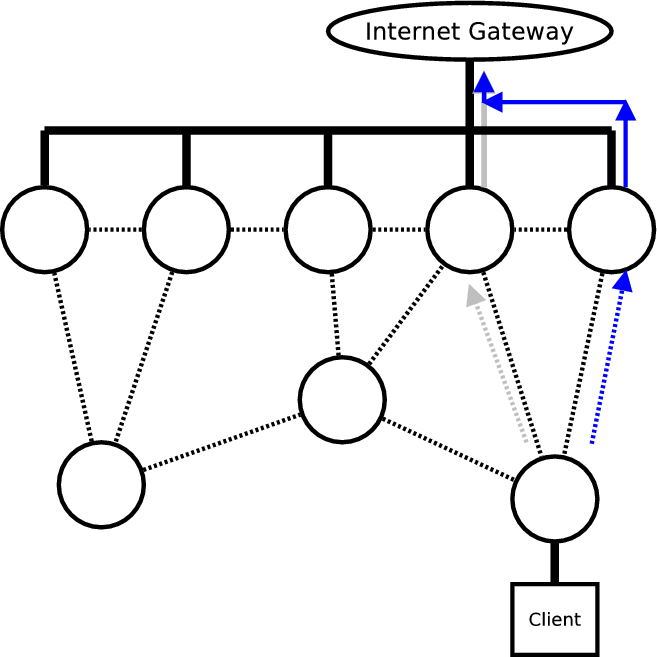Bridge-loop-avoidance-Testcases
This page describes test cases for the bridge loop avoidance. For more technical information and reference, please have a look at Bridge-loop-avoidance-II.
Test Cases
Roaming from backbone to mesh
The client is connected to the backbone first and then roams to a mesh node which is not connected to the backbone.
Ping the internet gateway or a mesh node continuously and see if the connection is recovered.
Roaming from mesh to backbone
The client is connected to a mesh node first and then roams the backbone.
Ping the internet gateway or a mesh node continuously and see if the connection is recovered.
A client switches its gateway (due to loss of link/better TQ)

Continuously ping the internet gateway from the client, and change the quality of the currently selected node (e.g. adding packet loss).
Limited Horizon tests
In this test, the first node A can’t reach the last one C due to a limited horizon (the OGMs of A don’t reach the OGMs of C and vice versa).
Test 1: Client 1 and Client 2 should be able to ping the internet gateway. There are are no bridge loops.
Test 2: Client 1 and Client 2 should be able to ping each other.
note1: Test 2 will only work if BATMAN runs over the backbone, e.g.
by calling “batctl if add br0”.
note2: Limited horizon may be easily simulated by increasing the
hop_penalty, e.g. batctl meshif bat0 hop_penalty 230 will have a 3 hop
range in a network without packet loss.
VLAN support
The clients are connected to local VLANs which are used on top of BATMAN. All claim frames should then have a VLAN tag.
Two LANs connected by one mesh
Two LANs are connected by one mesh. The backbone gateways of each LAN should find each other and claim only packets from each LAN. Every node should be able to reach every other node.
Two meshes connected by one LAN
Two meshes are connected to one LAN. The backbone gateways of each mesh should find themselves and share their claims, but should disregard claims for backbone gateways they are not part of (only possible with the backbone gateway grouping optimization) Every node should be able to reach every other node.